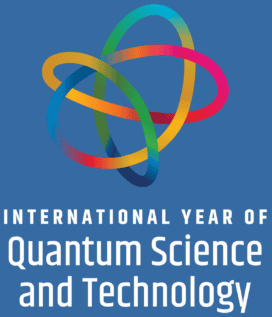One hundred years after its birth, quantum mechanics remains one of the most powerful and successful theories in all of science. From quantum computing to precision sensors, its technological impact is undeniable – and one reason why 2025 is being celebrated as the International Year of Quantum Science and Technology.
Yet as we celebrate these achievements, we should still reflect on what quantum mechanics reveals about the world itself. What, for example, does this formalism actually tell us about the nature of reality? Do quantum systems have definite properties before we measure them? Do our observations create reality, or merely reveal it?
These are not just abstract, philosophical questions. Having a clear understanding of what quantum theory is all about is essential to its long-term coherence and its capacity to integrate with the rest of physics. Unfortunately, there is no scientific consensus on these issues, which continue to provoke debate in the research community.
That uncertainty was underlined by a recent global survey of physicists about quantum foundational issues, conducted by Nature (643 1157). It revealed a persistent tension between “realist” views, which seek an objective, visualizable account of quantum phenomena, and “epistemic” views that regard the formalism as merely a tool for organizing our knowledge and predicting measurement outcomes.
Only 5% of the 1100 people who responded to the Nature survey expressed full confidence in the Copenhagen interpretation, which is still prevalent in textbooks and laboratories. Further divisions were revealed over whether the wavefunction is a physical entity, a mere calculation device, or a subjective reflection of belief. The lack of agreement on such a central feature underscores the theoretical fragility underlying quantum mechanics.
The willingness to explore alternatives reflects the intellectual vitality of the field but also underscores the inadequacy of current approaches
More broadly, 75% of respondents believe that quantum theory will eventually be replaced, at least partially, by a more complete framework. Encouragingly, 85% agree that attempts to interpret the theory in intuitive or physical terms are valuable. This willingness to explore alternatives reflects the intellectual vitality of the field but also underscores the inadequacy of current approaches.
Beyond interpretation
We believe that this interpretative proliferation stems from a deeper problem, which is that quantum mechanics lacks a well-defined physical foundation. It describes the statistical outcomes of measurements, but it does not explain the mechanisms behind them. The concept of causality has been largely abandoned in favour of operational prescriptions such that quantum theory works impressively in practice but remains conceptually opaque.
In our view, the way forward is not to multiply interpretations or continue debating them, but to pursue a deeper physical understanding of quantum phenomena. One promising path is stochastic electrodynamics (SED), a classical theory augmented by a random electromagnetic background field, the real vacuum or zero-point field discovered by Max Planck as early as 1911. This framework restores causality and locality by explaining quantum behaviour as the statistical response of particles to this omnipresent background field.
Over the years, several researchers from different lines of thought have contributed to SED. Since our early days with Trevor Marshall, Timothy Boyer and others, we have refined the theory to the point that it can now account for the emergence of features that are considered building blocks of quantum formalism, such as the basic commutator and Heisenberg inequalities.
Particles acquire wave-like properties not by intrinsic duality, but as a consequence of their interaction with the vacuum field. Quantum fluctuations, interference patterns and entanglement emerge from this interaction, without the need to resort to non-local influences or observer-dependent realities. The SED approach is not merely mechanical, but rather electrodynamic.
Coherent thoughts
We’re not claiming that SED is the final word. But it does offer a coherent picture of microphysical processes based on physical fields and forces. Importantly, it doesn’t abandon the quantum formalism but rather reframes it as an effective theory – a statistical summary of deeper dynamics. Such a perspective enables us to maintain the successes of quantum mechanics while seeking to explain its origins.
For us, SED highlights that quantum phenomena can be reconciled with concepts central to the rest of physics, such as realism, causality and locality. It also shows that alternative approaches can yield testable predictions and provide new insights into long-standing puzzles. One phenomenon lying beyond current quantum formalism that we could now test, thanks to progress in experimental physics, is the predicted violation of Heisenberg’s inequalities over very short time periods.
As quantum science continues to advance, we must not lose sight of its conceptual foundations. Indeed, a coherent, causally grounded understanding of quantum mechanics is not a distraction from technological progress but a prerequisite for its full realization. By turning our attention once again to the foundations of the theory, we may finally complete the edifice that began to rise a century ago.
The centenary of quantum mechanics should be a time not just for celebration but critical reflection too.
This article forms part of Physics World‘s contribution to the 2025 International Year of Quantum Science and Technology (IYQ), which aims to raise global awareness of quantum physics and its applications.
Stayed tuned to Physics World and our international partners throughout the year for more coverage of the IYQ.
The post Quantum foundations: towards a coherent view of physical reality appeared first on Physics World.


